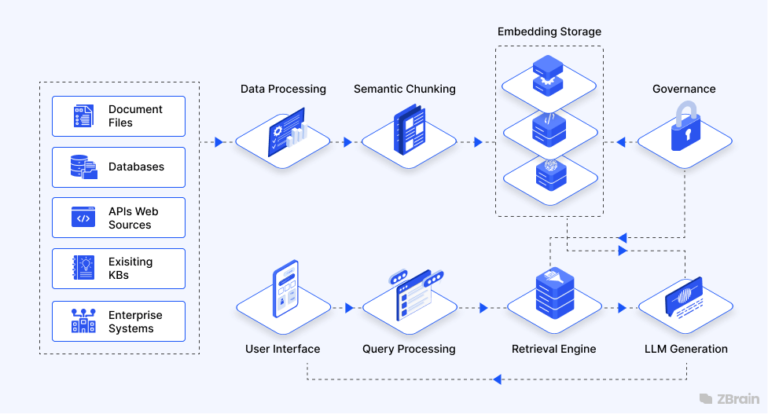Best Python Frameworks for Automation and Web Testing
Python framework options are widely used in automation and web testing to ensure faster, high-quality releases. While manual testing may suffice for small apps, large-scale applications demand scalable automation. Python offers versatile testing frameworks that help teams maximize coverage, reduce test time, and maintain software reliability.
Overview of Python testing framework?
Python is a popular programming language that is well-known for its adaptability and simplicity in test automation and web development. It is perfect for creating test cases because of its readability and simplicity. Being an open-source programming language, many frameworks are based on Python.
Python testing framework is a dynamic test automation framework that consists of a set of libraries, frameworks, and tools to automate tests of a software application while building it. With these tests, testers can assess the outcomes of the applications with the intended results and provide test reports automatically. Thus, it helps in catching errors early in the development process.
Compared to manual testing, the automated testing using Python frameworks enables spotting errors in file contents, data tables, and other features more consistently and efficiently while also providing insights that manual testing simply can’t.
Why Choose a Python Testing Framework?
Python testing frameworks help in organizing and managing test cases efficiently and effectively. It reduces manual effort by automating projects of any scale, thus improving code quality and test coverage and optimizing the testing process. Its integration with tools for reporting provides consistent results and supports continuous testing.
Besides these, some of the other reasons to choose the Python automation framework are discussed below.
- Readable syntax: Python provides a simple syntax, helping testers effectively write and understand tests without any complexity.
- A large ecosystem of libraries and frameworks. For automation and web testing, Python supports various testing frameworks that facilitate different testing types, including Unit, integration, regression, and functional testing.
- Improved code quality: With structured test execution, Python promotes better coding practices. This helps in detecting logic errors early, thus enforcing consistency across development teams.
- Easy integration with CI/CD tools: Python frameworks are CI/CD-friendly. Seamless integration with CI/CD pipelines triggers automated tests across development stages, reducing delays and manual oversight.
- Reusable test suite: testers can create a Python test suite once and can reuse them across different parts of a project or even in different projects.
- Detailed insight into test failures: The Python test framework highlights the exact reason and location of test failures by using clear error messages and logs. This helps in quickly fixing issues without guessing or checking on everything manually.
- Cross-platform compatibility and parallel test execution: Python test scripts can be run in parallelly across various platforms, including Windows, Linux, and macOS, helping in verifying application behaviour across diverse environments.
When it comes to automation and web testing, especially with platforms like LambdaTest, several Python frameworks stand out for their compatibility, strong community support, and flexibility with cloud-based environments. LambdaTest is a GenAI-Native test execution platform that allows you to perform manual and automated tests at scale across 3000+ browsers and OS combinations.
It integrates smoothly with popular Python automation frameworks like pytest, Selenium, Unittest, and Robot Framework, enabling testers to build robust automation architectures. With LambdaTest’s cloud infrastructure, you can run automated tests on a Selenium Grid without managing local setup, making it easy to scale testing efforts.
These Python frameworks, when paired with LambdaTest, also support parallel test execution, which helps significantly reduce test duration and improve efficiency in regression testing cycles across browsers and platforms.
The platform offers helpful features like smart test scheduling, AI-driven insights, intelligent reporting, and real-time debugging tools, allowing teams to test Python-based applications quickly and intelligently. LambdaTest is one of the practical and scalable options for QA teams looking to enhance their cloud-based test automation workflows.
See also: Data-Driven Decision-Making: How Tech Helps
Popular Python Testing Frameworks for Automation and Web Testing
Below are the top Python testing frameworks, each with their benefits and limitations, so that testers can decide when to use them.
Behave Framework
Behave is one of the most widely used Python test frameworks, specifically used for behavior-driven development. It provides simple integration with PyCharm, user-friendly testing for those with no advanced technical skills.
Key Benefits of Behave:
- Behave defines system behavior with semi-formal language and involves using domain vocabulary that ensures behavior remains constant.
- Provide building blocks for the execution of a large variety of test cases.
- Facilitates effective collaboration among development teams to work on diverse modules with similar features.
- Provide specs in a similar format, offering managers better clarity on the output of developers and QAs.
- It can be used when there is a need to integrate tests with continuous delivery pipelines and validate testing requirements at each stage of development.
Limitations of Behavior:
- Works optimally only for black-box testing.
- For unit or integration testing, it is not the best fit because the verbosity inherent in these tests can lead to complicated test scenarios.
Robot Framework
The Robot Framework is largely suitable for acceptance testing and robotic process automation. This framework is compatible with both web and mobile applications and operating systems, including Windows, macOS, and Linux. It’s a simple syntax and doesn’t require previous programming knowledge to use Robot.
Key Benefits of Robot Framework
- Support keyword-driven testing, provide excellent reporting, and be good for ATDD, making automation simpler by helping testers easily create readable test cases.
- Enables easy usage of test data syntax.
- Supports all major operating systems, including macOS, Windows, Linux, and all application types such as web and mobile apps.
- Easy-to-understand report data.
- It is equipped with numerous APIs and an ecosystem that makes it highly extensible and easy to integrate with third-party tools.
- Its rich set of generic tools and test libraries can be used individually in separate projects.
- Comes with active community support.
Limitations of Robot Framework
- No default parallel test execution support. It requires integration with Selenium Grid.
- While it is largely convenient to use, creating customized HTML reports can be difficult.
- Beginners may require a bit longer learning curve to work within the RF’s predefined methodology.
- For creating generic keywords, it might take longer than writing coded tests.
- Report customization is quite difficult.
Pytest Framework
Pytest is a scalable Python testing framework. It uses plugins and other features, making it less challenging to write tests while also automating the debugging process. Pytest uses less code, which is good for completing small tests, and can also efficiently handle complicated tasks.
Key Benefits of the Pytest Framework
- Provides a compact and simple test suite
- It is highly extensible with plugins, such as the Pytest HTML plugin, which can be added to the project to print HTML reports with a single command-line option.
- Provide extensive plugins and large community support.
Limitations of the Pytest Framework
- Though the test cases can be easily written in Pytest, testers won’t be able to use those in other testing frameworks.
- Pytest doesn’t always integrate well with other Python frameworks. It further needs to extend the capabilities of pytest by integrating with one of the many plugins it supports.
PyUnit (Unittest) Framework
PyUnit, also known as Unittest, is a testing framework specifically for unit testing. It is directly built into Python, which comes with the Python package by default. Therefore, testers and developers don’t have to install it separately. With PyUnit, testers can test specific parts of code and organize different tests into collections. They can also test automation frameworks and prepare different test cases. PyTorch effectively finds bugs early in the testing cycle, allowing the necessary modifications.
Key Benefits of the PyUnit Framework
- No additional module installation is required since it is part of the standard Python library.
- Provides straightforward, clean, and quick test case execution.
- Quick XML and Unittest SML reports generation.
Limitations of the Unittest Framework
- Test code supports abstractions that can obscure intent, making it difficult to interpret.
- Requires a lot of ‘boilerplate’ code.
- Uses camelCase naming convention.
Testify Framework
Like PyUnit, Testify can also be used for unit testing. It is a relatively simple framework used for system and integration testing. It aims to replace the popular Unittest and Nose frameworks and add advanced features like assertion methods, test discovery, and test report generation to expand on some of the features provided by PyUnit.
Key Benefits of Testify Framework
- Simple and easy to understand with lucid syntax.
- Enables test discovery.
- Offers extensive plugins for additional functionality and improved features.
Limitations of Testify Framework
- Testify does not support parallel testing. It has difficulty running tests simultaneously on two or more applications.
- It doesn’t have good documentation, so beginners might need to struggle for a bit.
Doctest Framework
Doctest is a module in the Python standard library; it comes preinstalled with Python. However, testers need a text editor to write and edit code for doctest. With doctest, testers can test their code while writing it with embedded test cases directly in the functions’ docstrings. With doctest, testers can also perform several tests, including regression testing and even test interactive features to ensure they function correctly.
Key Benefits of Doctest Framework
- Since it is standard equipment, testers can easily start without installation and generate tests based on the output of the standard Python interpreter shell.
- Provide extensive code documentation with up-to-date interactive Python sessions to check if they are working properly.
Limitations of the Doctest Framework
- It only compares printed output, resulting in failed tests if there are discrepancies.
- Being static, it cannot be parameterized.
- It does not support test discovery, test fixtures, and test runner features.
Key Considerations While Choosing the Right Python Testing Framework
While selecting the right Python testing framework, several factors, including specific project needs, testing scope, and team expertise, must be considered before making a decision. For example, for BDD, Behave might be the best fit, while for extensive test reports, Robot Framework could be a good option.
Some key aspects to be followed are:
- Testing Needs: Choose a framework based on the use case. Pytest, and Unittest for unit testing, Behave, and Lettuce for behavior-driven testing, Robot Framework for keyword-driven and Acceptance Test Driven Development, and lastly, Locust for load testing.
- Ease of Use: Select the frameworks that provide simple syntax and provide easy configuration support to streamline test development.
- Integration and Compatibility: Ensure the framework integrates with CI/CD pipelines, automation, and third-party tools.
- Scalability: Opt for frameworks that enable parallel testing and work efficiently across different environments.
- Community Support: Ensure that the framework comes with active community support and provide comprehensive documentation to ensure long-term reliability.
Conclusion
In conclusion, the Python framework is considered a good choice for automation and web testing, making the test automation process easy and fast.
A Python testing framework streamlines the testing process by offering structure and consistency for automated tests, helping testers to test and release applications faster. They provide several essential tools for effective debugging, accelerated test execution, and robust reporting. Testers must select a framework that provides scalability, ease of use, and integration with the existing workflows to ensure it meets their project’s specific needs.






